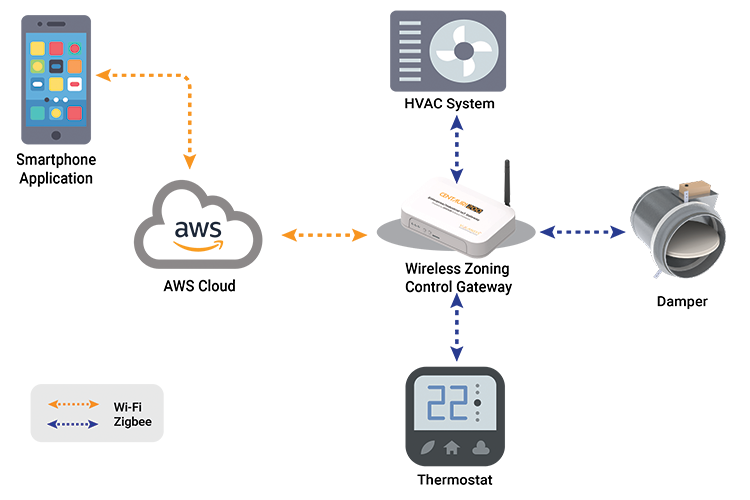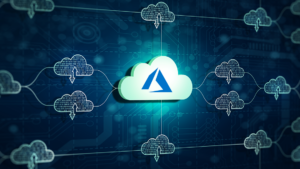

ACL Digital
5 Minutes read
IoT in HVAC: Key Applications and How It Works
The Internet of Things (IoT) is transforming how heating, ventilation, and air conditioning (HVAC) systems are managed in residential, commercial, and industrial environments. By embedding sensors and connectivity into HVAC infrastructure, IoT enables real-time monitoring, predictive maintenance, energy optimization, and regulatory compliance.
According to Zion Market Research, the global smart HVAC control market is expected to reach $28.3 billion by 2025. This growth highlights how integrating IoT technologies in HVAC systems improves operational efficiency, service delivery, and energy management—while unlocking new revenue streams for contractors and equipment manufacturers.
Advantages of IoT in HVAC
Implementing IoT in HVAC systems provides multiple benefits:
- Condition-Based Maintenance: Move from reactive to proactive service models, reducing downtime and repair costs.
- Energy Efficiency: Real-time data analysis helps in optimizing power usage and reducing utility bills.
- Remote Monitoring: Stakeholders can control HVAC systems from anywhere using mobile or web interfaces.
- Compliance Simplification: Automatically generated data logs and reports help meet regulatory and sustainability mandates.
- Improved Customer Experience: Faster diagnostics and targeted servicing lead to higher customer satisfaction and loyalty.
How Does an IoT-Based Smart HVAC System Work?
A typical smart HVAC system integrates the following components:
Sensors/Devices
Sensors installed throughout the HVAC system continuously monitor variables such as temperature, humidity, air quality, and energy consumption. This data is transmitted instantly to the cloud.
Connectivity
The HVAC software filters, aggregates, and stores the sensor data on a secure, cloud-based analytics platform.
Data Processing
Built-in algorithms analyze the data using historical patterns and predefined thresholds. This enables continuous monitoring, intelligent system control, predictive maintenance, and proactive support.
User Interface
When the system detects abnormal behavior like power consumption exceeding predefined limits, it proceeds to send dynamic alerts to system managers enabling timely interventions.

IoT Applications in HVAC
Let’s dive into the five major applications of IoT in HVAC systems:
Preventative Maintenance
Traditional HVAC maintenance relies heavily on scheduled tune-ups or emergency fixes after system failure. However, both approaches lack visibility into the system’s current condition, leading to inefficiencies and high costs.
With IoT sensors, HVAC systems can adopt condition-based maintenance. These sensors collect real-time data like vibration patterns, power consumption, and temperature fluctuations. When anomalies are detected, technicians are alerted and can take appropriate action—often resolving issues before the user notices them. This reduces unnecessary service visits and ensures quicker, more accurate repairs.
Energy Efficiency
Legacy HVAC systems provide limited visibility into real-time energy consumption, often leading to inefficiencies. IoT-enabled systems allow for continuous monitoring of energy use, detecting inefficiencies and adjusting operations accordingly.
For instance, IoT algorithms can factor in weather forecasts and adjust HVAC operation to minimize energy use while maintaining comfort. These insights also help buildings become active participants in smart grids, further driving sustainability efforts.
Remote System Monitoring and Control
Gone are the days of manual diagnostics and guesswork. IoT enables stakeholders to monitor HVAC systems remotely via apps or web dashboards.
Technicians, property managers, and homeowners can view detailed metrics like pressure, humidity, and cycle counts. Some systems even offer instant leak detection and fault alerts. This remote access minimizes downtime, ensures faster resolutions, and optimizes technician deployment by knowing the issue beforehand.
Regulatory Compliance
Many HVAC installations must comply with environmental and safety regulations. Manually logging and auditing these systems can be time-consuming.
IoT-enabled systems simplify this process by continuously recording operational data. These logs can be automatically compiled into reports that prove compliance with regulatory standards—streamlining audits and reducing manual errors.
Recurring Service Plans
IoT also enables new business models. Instead of fixed schedules, HVAC contractors can offer performance-based or usage-based service plans. Customers benefit from timely and efficient service, while contractors reduce overhead and maximize profitability.
IoT platforms can also provide end-users with energy dashboards, usage reports, and cost-saving recommendations—making HVAC services more interactive and personalized.
ACL Digital’s Expertise in IoT-Based HVAC Systems
A leading US-based manufacturer of HVAC zoning dampers and systems upgraded a traditional wired HVAC zoning system to a smart, wireless solution with remote management capabilities.
Key Challenges
- Transitioning from a legacy wired system to a wireless solution with minimal disruption
- Lack of remote access for full HVAC system control
- Requirement for a single-vendor solution for seamless integration and support
ACL Digital’s Solution
- Sensor integration and device firmware development
- Real-time data analytics and cloud infrastructure setup
- Mobile/web dashboards for remote HVAC monitoring
- Predictive maintenance algorithms powered by AI/ML
- Integration with third-party systems for compliance and automation
Results
- Reduction in installation and maintenance costs
- Enhanced user experience through remote access via mobile app
- Smarter decision-making enabled by cloud-based data processing
Conclusion
IoT is rapidly revolutionizing the HVAC industry. From preventative maintenance to intelligent control and energy optimization, IoT solutions are redefining system reliability, customer satisfaction, and business efficiency.
ACL Digital offers comprehensive IoT engineering services that helps to design and develop enterprises, startups, and OEMs build smart, connected HVAC systems. From new product development to legacy system upgrades, we enable faster, cost-effective market entry with scalable and reliable solutions.
Looking to modernize your HVAC equipment or develop an IoT-enabled system? Get in touch with us today.
Related Insights



Why Rate Limiting Is the Unsung Hero of Modern Web Application Security



